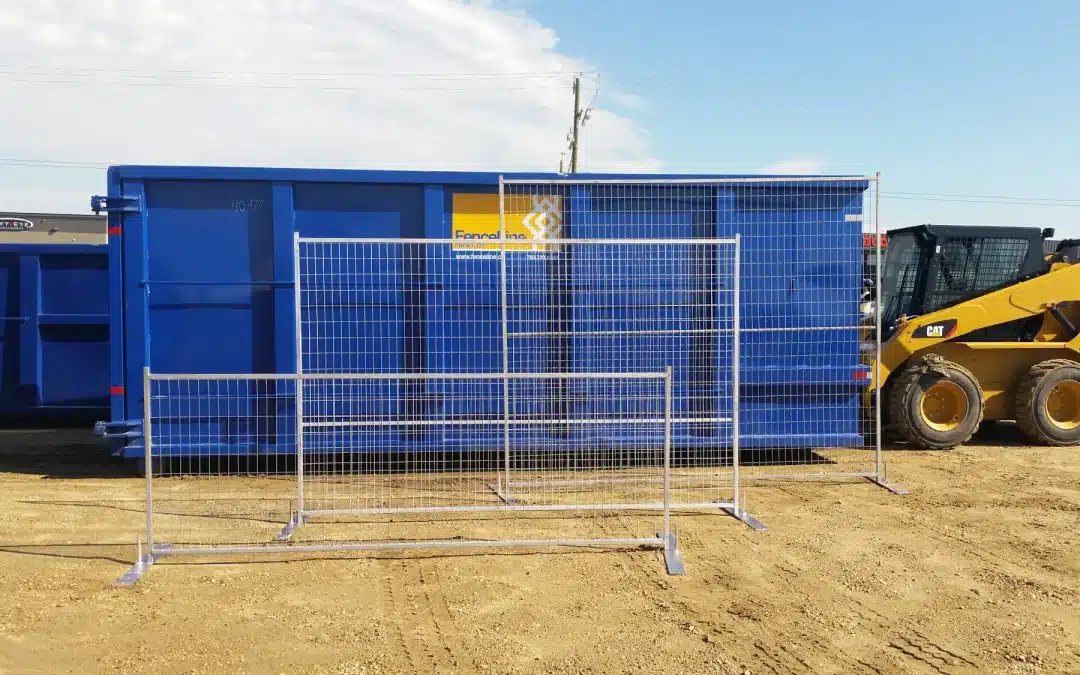Temporary fencing is essential for construction sites. Not only does it help construction companies stay compliant with local regulations, but temporary fencing also keeps both the public and workers safe while providing an important layer of security that prevents expensive equipment from being stolen.
Key Sections
- The costs of not having temporary fencing on a construction site
- How to prepare your site for temporary fencing
- Urban-specific challenges for construction sites and how temporary fencing helps
- How to make sure your temporary fencing is ready for fall and winter
Why Construction Fencing Matters
Construction fencing is mandatory on almost every construction site in Alberta. It creates a boundary around the work area that provides safety and security, acting as a deterrent to vandals and thieves while protecting the public from an environment that can be hazardous to those without proper training.
But the value of construction fencing goes deeper than that. Here are a few key reasons why fencing is so important on construction sites:
- Meeting Alberta’s legal requirements
- Pedestrian safety
- Theft prevention
- Controlling vehicular access
- Providing safe areas for workers
- Reducing insurance costs by reducing liability claims
The Costs of Not Using Temporary Fencing for Construction
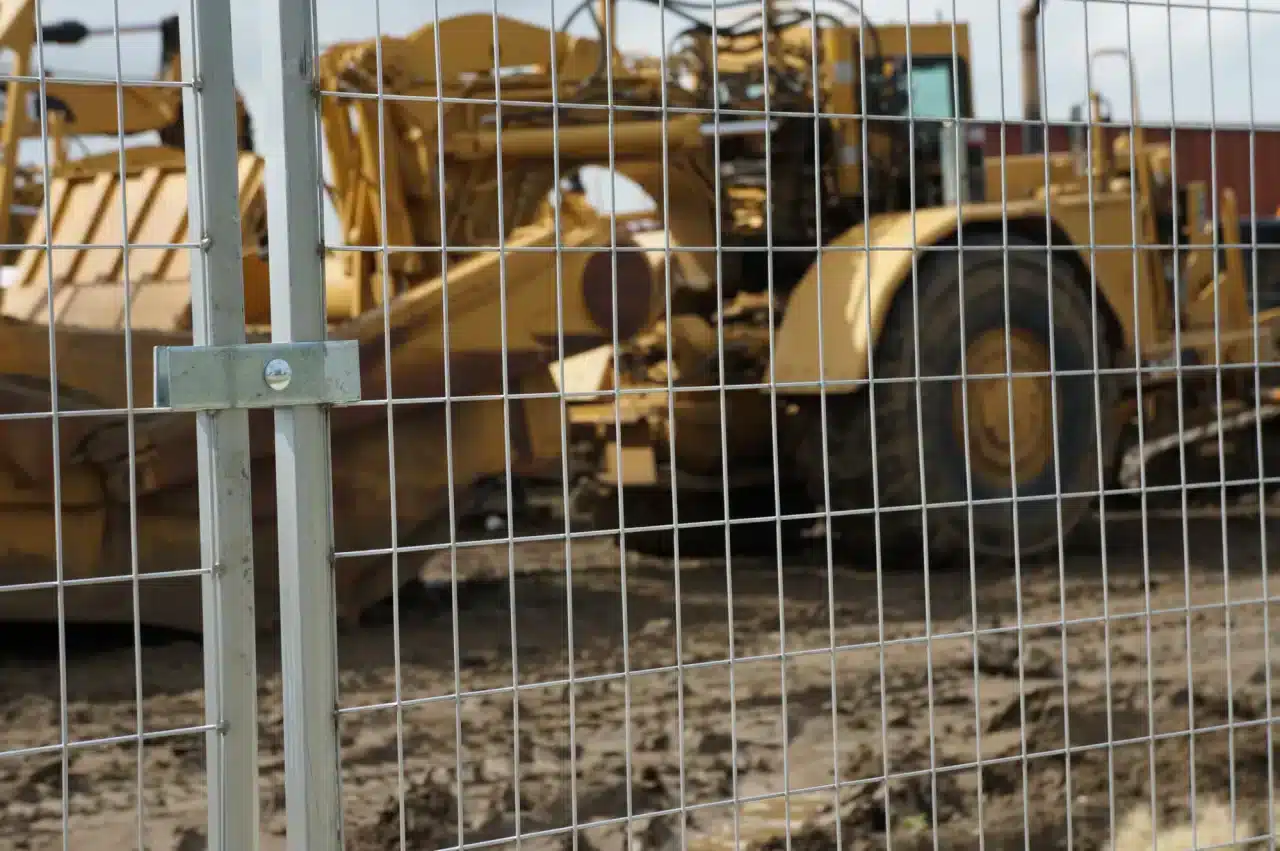
Temporary fencing on construction sites doesn’t just keep people safe and your equipment secure; it can also save you money. Here’s how:
Liability & Fines
The rules for fencing on construction sites in Alberta can be found in the National Building Code – Alberta Edition on Page 644, and are fortunately quite straightforward. They dictate that:
- If a construction or demolition activity is 2 metres or more from a public way, a fence that’s at least 1.8 metres high will be erected.
- Where access is needed for workers or vehicles, the fence will be equipped with a gate that can be opened, closed, and locked.
- The fencing must remain in place for the duration of the project.
In both Calgary and Edmonton, an outline of construction fencing is often required in the building permit process, and there can be penalties if fencing and gates are not properly installed or maintained. Fines for non-compliance can be up to $100,000.
Delays
Delays can be costly on construction sites, especially when contractors are involved and everyone is working on a tight schedule. Everything from injuries and security to damage and equipment can cause delays, and temporary fencing for construction sites helps prevent that from happening.
If an issue with fencing causes a hazard to public safety, a Safety Codes officer can lock down a site and secure it at the owner’s expense. That can be expensive and put a project behind schedule.
Theft & Equipment Loss
Unfortunately, theft and vandalism are issues on job sites. With expensive materials and machinery, construction sites can be a target for criminals looking for an easy score and vandals looking to cause some damage.
Last year, police in Calgary even warned that thefts were increasing on construction sites for new homes. Fortunately, temporary fencing is a great way of fighting back, as it provides a barrier that makes stealing from construction sites significantly more challenging.
Increased Insurance Premiums
Workplace injuries and the theft of equipment have immediate costs, but they can also compound quickly when you consider how they’ll affect the insurance your company pays. Temporary fencing will reduce liability claims by preventing unauthorized people from entering your site, and insurance companies pay attention to how seriously contractors take loss prevention.
Reputational Damage for Developers & Builders
All of the above hidden costs can also cause damage to the reputation of those responsible for construction sites. Whether it’s costly delays, theft of expensive equipment, or fines for non-compliance, not having temporary fencing can result in reputational damage that is hard to undo.
Temporary fencing doesn’t just protect your job site; it’s a requirement of the construction industry.
How to Prepare for Construction Fencing Installation
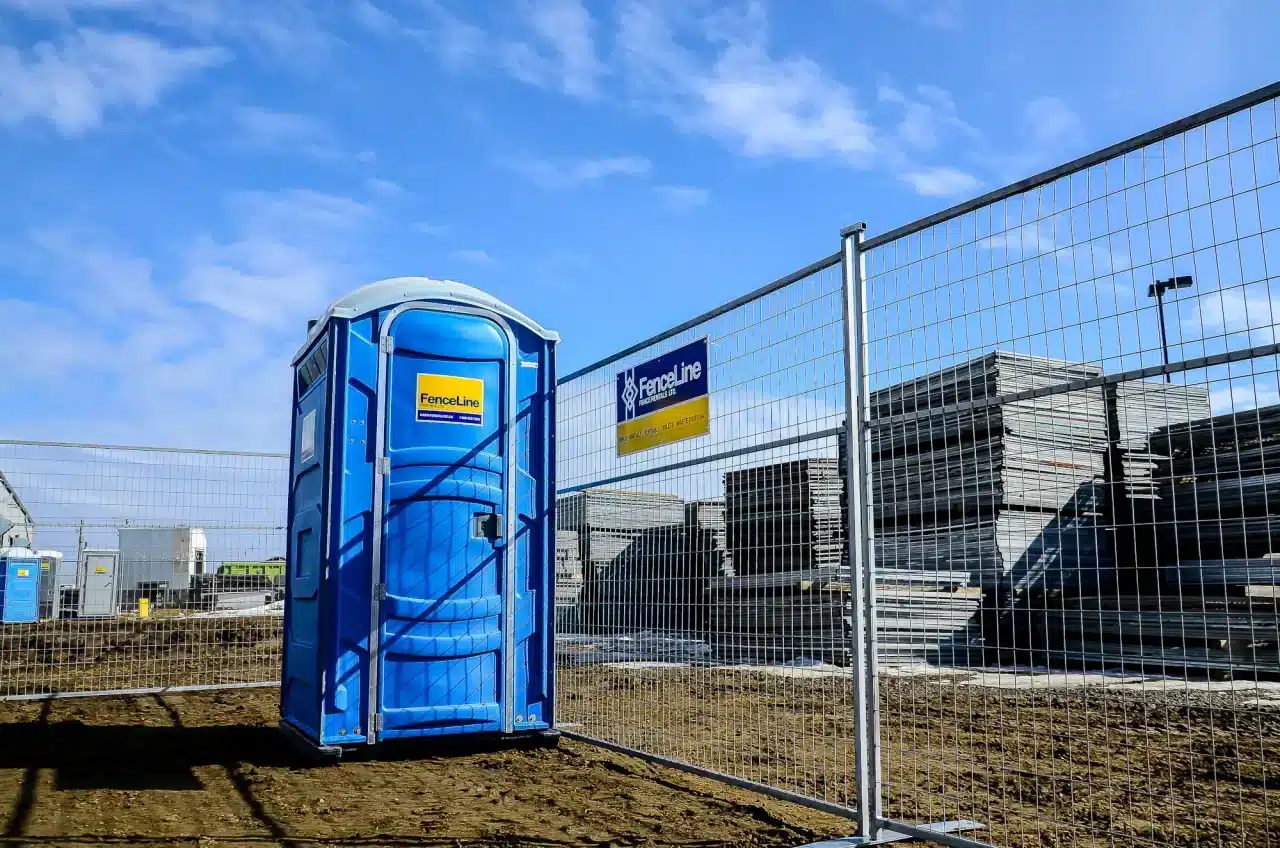
Assess Your Site
Your first step to prepare for construction fencing installation should be to take a good, hard look at your site and determine what it needs. Some key things to consider include:
- Determining the size of your site so you know how many panels you’ll need
- Where are the most convenient access points for workers and vehicles?
- Are there obstructions that need to be worked around?
- Is there uneven ground that needs to be accommodated
Choose the Right Panels
The right temporary fencing panels can make all the difference, and you’ll have the option between heavy-duty and standard panels. What’s right for your job site will depend on the weather conditions and security needs of the location.
You’ll want temporary fence panels that are lightweight but durable and able to stay stable for the length of your job.
Anchor & Stabilize Your Fencing
In Alberta, the weather conditions can be a challenge for construction sites, and while the right temporary fencing will be built to withstand heavy rain, snow, and hail, that doesn’t mean you shouldn’t prepare for it.
Ensuring that the base of temporary fencing is flush to the ground and stable will ensure it stays standing and does its job, but in extreme situations, it can be helpful to anchor temporary fencing with weights or even sandbags.
Coordinate Delivery & Drop Zone
Alberta requires that temporary fencing be set up for the duration of a construction project, so work can’t begin until your temporary fencing is set up. While it only takes a couple of hours to set up fence panels on smaller sites, it is still prudent to coordinate delivery and set up a few days before construction work starts.
Have a clear area for fencing to be unloaded so that setup can begin.
Should You Prep Your Fence for Fall & Winter?
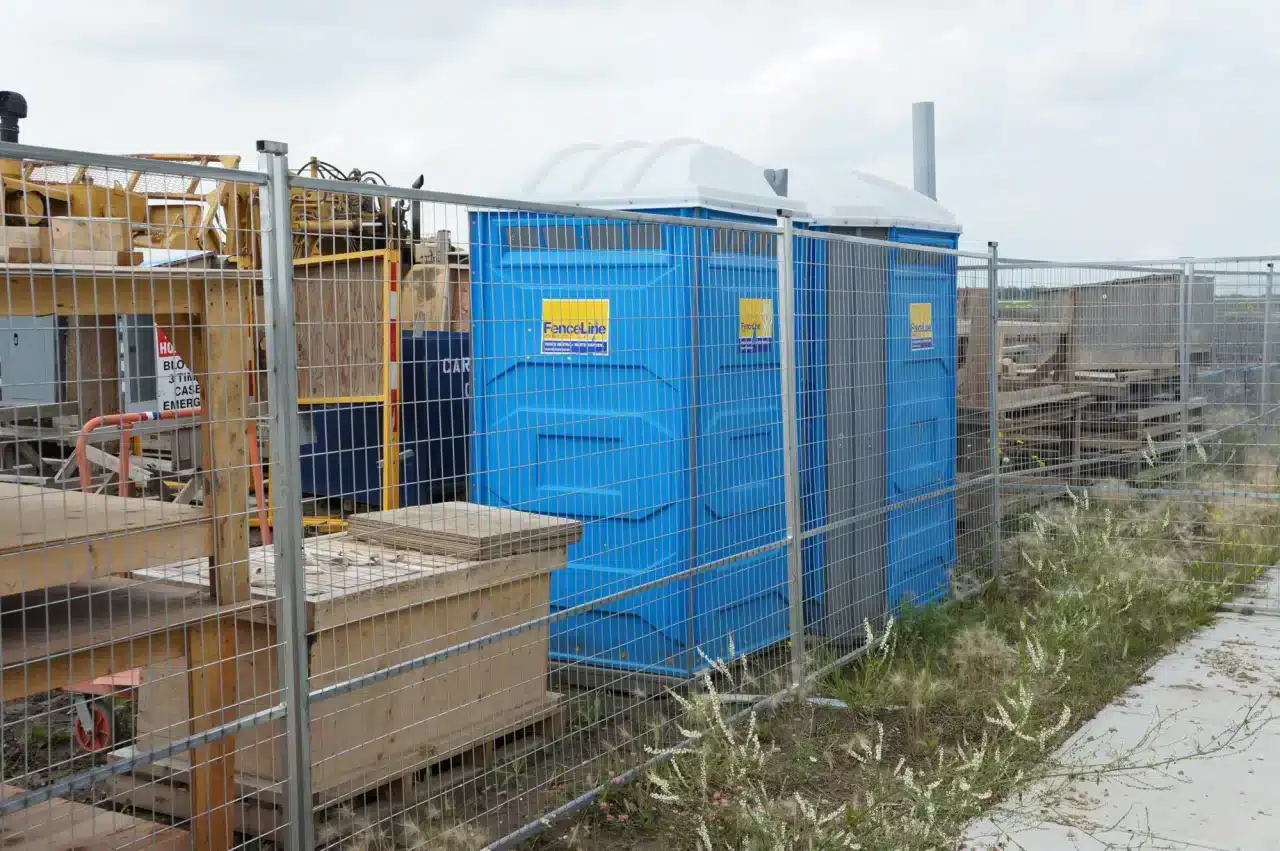
Whether you’re in Calgary, Edmonton, or another area in Alberta, you need to be prepared for extreme weather. That’s especially true once you get past Labour Day. Winter may bring the most challenging weather, but everyone knows winter in Alberta can hit at any time.
Here’s how to prepare your construction fencing for fall and winter:
Inspection & Assessment
Understanding what needs to be fixed and what doesn’t starts with inspection. The first step is to conduct a thorough inspection of your temporary fencing. Look for signs of wear, such as rust or structural damage like bent poles or loose panels.
It’s incredibly important to identify any weak points in your current fencing for construction that could fail under the weight of snow or pressure from strong winds.
Early detection allows for timely repairs, preventing bigger issues when the weather becomes severe.
Key takeaways:
- Start with an inspection
- Look for rust and structural damage
- Identify weak points
Maintenance & Repairs
Once you’ve identified issues, it’s time to maintain and repair. Address rusting parts with anti-corrosion treatments and replace any components that compromise your construction fence’s integrity.
Ensure all connections are tightened and the base supports are secure enough to resist shifting ground conditions, which can be caused by freeze-thaw cycles typical in Alberta winters.
Key takeaways:
- Treat rust with anti-corrosion solutions
- Replace broken or weak components
- Tighten all connections
- Secure base supports
Upgrades for Enhanced Durability
If your fence has seen better days, consider upgrading to a construction fence designed to withstand the rigours of Alberta’s weather. Fences with a welded wire mesh construction, square tube frames, and a hot-dipped galvanized finish can offer better durability.
On top of that, installing wind braces can provide extra stability during gusty conditions—an investment that pays off by minimizing emergency repairs later.
Key takeaways:
- Consider upgrading to a more durable fence
- Choose fences with welded wire mesh
- Install wind braces for extra stability
New Construction Fence Installation
If you do need to install a new construction fence, think about the challenges your site will face in the winter. Ground anchors can ensure stability when the ground is frozen, while strategic placement can help shelter your fence from the wind.
Key Takeaways:
- Consider winter’s challenges (extreme cold, ice, wind, etc.)
- Use ground anchors for stability
- Strategically place fence panels
Compliance with Local Regulations
Alberta’s construction regulations include specific standards for temporary fencing to ensure they adequately protect the public and construction personnel.
For example, in Calgary, there are specific regulations governing the construction of temporary fences, including installation guidelines, which must ensure they can withstand reasonable weather conditions, such as wind. Damaged or collapsed fencing must be addressed promptly.
Read up on these regulations and incorporate them into your planning and maintenance routines to avoid penalties.
Key Takeaways:
- Understand local regulations
- Damaged fencing must be replaced promptly
- Incorporate them into your planning and maintenance routines
Preparation for Emergency Weather Events
Ensure your construction site is equipped for emergency fence repair. Keep a supply of essential spare parts on hand, including extra panels, clamps, and ties. Having a relationship with a reliable fencing company in Calgary or Edmonton can ensure that any spare parts needed are delivered quickly.
Key Takeaways:
- Be ready for emergencies
- Keep spare parts on-site
- Choose a reputable fence rental company
Construction Fencing for Urban Environments
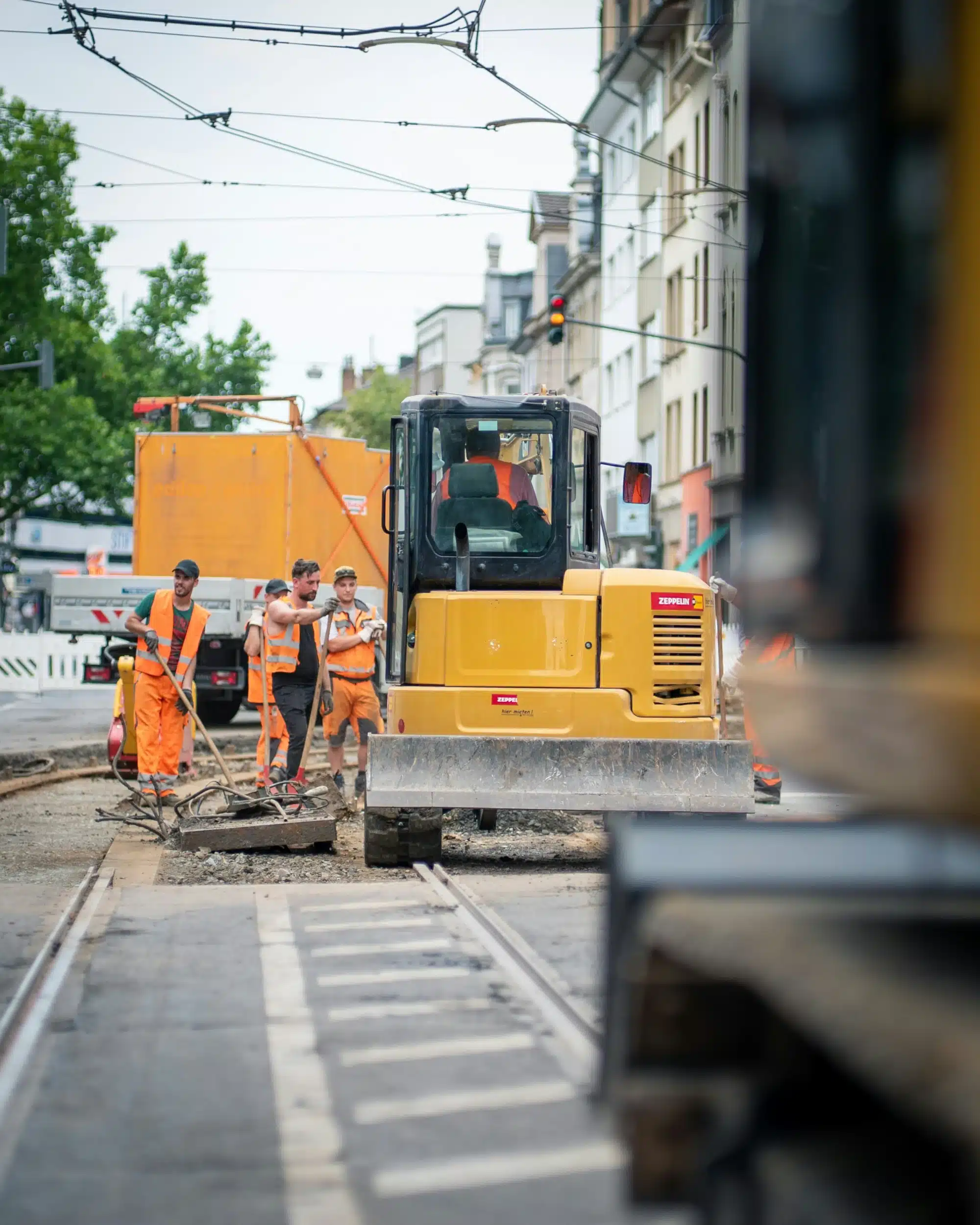
While temporary fencing is important on any construction site, it can be especially useful in urban environments where there are likely to be more pedestrians, traffic, and tighter spaces to work in. Not only does that make safety more important, but it also increases the chances of theft and vandalism. That makes temporary fencing critical.
Remember, there are strict rules in Alberta for when temporary fencing is required, and it can be found on page 644 of the National Building Code – Alberta Edition. The main things to know are:
- Any construction or demolition site that’s located 2 metres or more from a public way requires construction fencing that’s at least 1.8 metres high.
- There can’t be any openings in the construction fencing, other than those required for accessing the site. Those access points should be equipped with gates.
- The construction fencing needs to be in place from Day 1 of the work on your site, right until the end.
Those rules will almost always apply to construction sites in urban environments, especially those where pedestrians are likely to be nearby and walking on adjacent sidewalks. Falling debris and large equipment can present real dangers.
Security
There are often expensive materials and equipment on construction sites, and that can make them a magnet for thieves. Whether it’s a home construction in an inner-city area or a larger building in or around downtown, the right temporary fencing for construction sites will be durable and keep would-be thieves out.
Vandalism can be an issue on construction sites, too, especially in urban areas. Good fencing for construction sites will keep your equipment and materials from being abused.
Access
Whether it’s workers needing access to your construction site or large equipment that’s needed to get the job done, it’s important that your site has access points for entry and exit. They can’t take away from the important safety and security that fencing for construction provides, so getting the right gate that can open and close easily and safely is vital.
At FenceLine Rentals, you have 4 different options for gates:
- Basic gate: The basic gate adds easy access without having to take your fence apart.
- Deluxe gate: The professional-looking deluxe gate is hinged with a frame.
- Caster gate: The caster gate has a custom-designed caster that provides easy vehicle access anywhere on your site perimeter.
- Heavy-duty panel: You can also rent a heavy-duty panel to function as a gate.
Noise & Visual Mitigation
Maintaining the visual appeal of a property can be a priority on many construction sites, especially when there are people living nearby or even next door. Incorporating aesthetic designs that blend with urban cityscapes is a thoughtful way of minimizing the disruption caused by a construction site. Signage and privacy screenings can be included with temporary fencing to reduce the impact a construction site has on neighbours.
Spacing Challenges
One of the more complex challenges to solve when working in a dense urban area like Downtown Calgary or Edmonton is that job sites can often be restricted. With so much going on around, space can be limited, and buildings might be directly bordering a construction site.
None of that can be used as an excuse to sacrifice on safety or security, though, so there needs to be flexibility in design for fencing on construction sites in urban areas.
FAQs About Construction Fencing
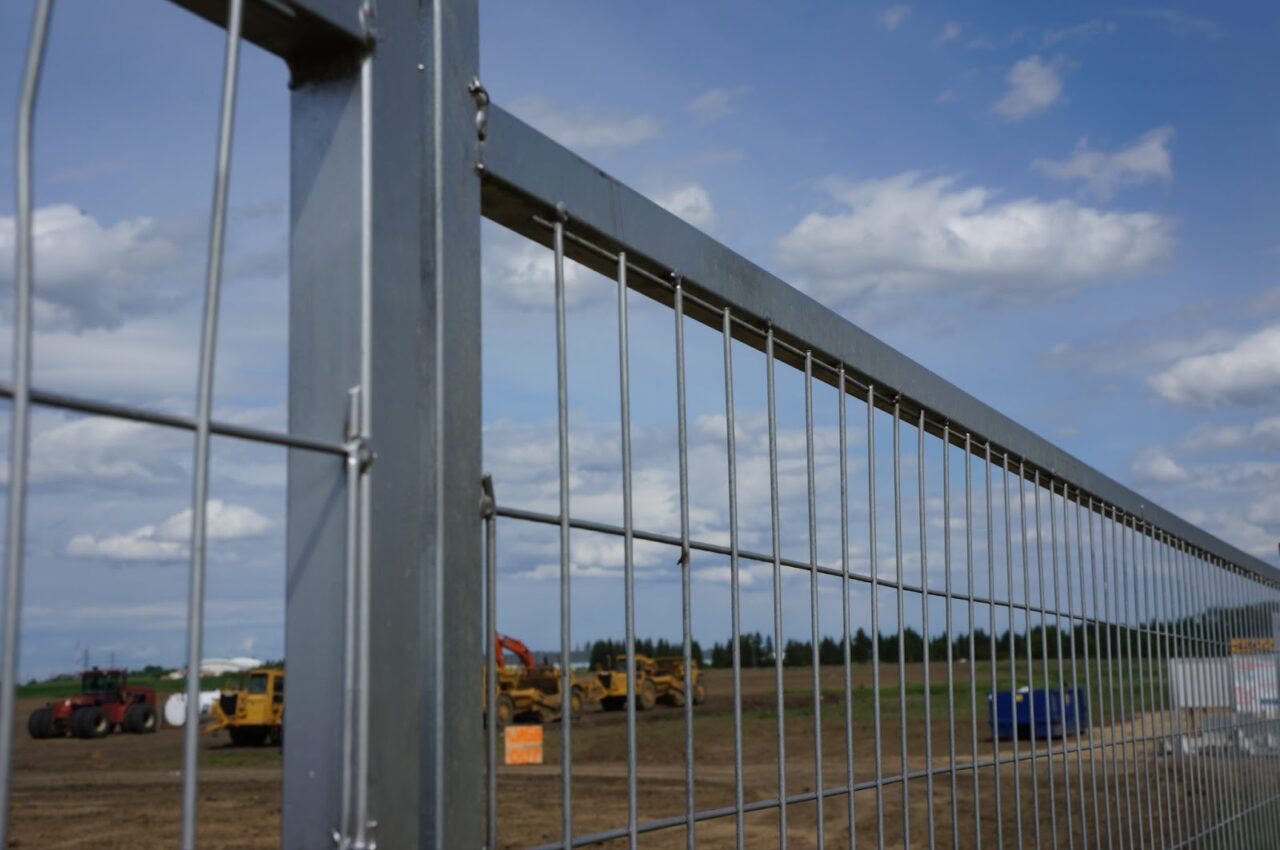
How many construction fence panels do I need for my site?
The number of construction fence panels you need for your site depends on its size. Once you know the size of your site, use the following equations:
Number of Fence Panels = ( Fencing Required / Width of Fence Panel [feet])
Fencing Required = Total Perimeter (feet) − (Number of Gates × Width of Each Gate [feet])
How long does it take to set up temporary fencing?
Setting up temporary fencing is a quick process when you know what you’re doing, which is why FenceLine Rentals offers setup and dismantling services. Once you’ve booked your temporary fencing, our team can deliver it and set it up for the duration of your project.
Is different fencing needed on urban construction sites?
No. The exact same fence panels that work to keep rural construction sites safe and secure will work in urban areas, as well. There are unique challenges in cities like Calgary and Edmonton, but we have a variety of temporary fence panels that will meet the needs of your construction site.
The Temporary Fencing Your Construction Site Needs
Whether you’re looking for added security to keep the public and your workers safe or to reduce liability and ensure you’re compliant with government regulations, FenceLine Rentals has the temporary fencing that your construction site needs. Our expert team can help you plan for urban environments, challenging weather conditions, or any other factors that may present challenges for your construction site.
Booking early for high-demand seasons like spring and summer will ensure you get the exact temporary fencing you need, so request a quote for construction fencing in Alberta today.


